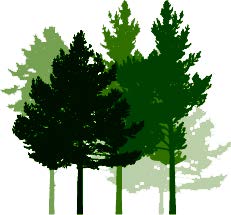NZFFA Member Blogs
Member Blogs
Recent blogs:
Determinations, specialty timbers and the building code
Dean Satchell's blogMonday, July 10, 2017
What do you know about "Determinations"? Well... Determinations are best described as judgements made by MBIE where disputes arise between the Building Consent Authority (BCA) and those undertaking building work. BCA's must accept compliance where the building work is an "Acceptable Solution", such as when using materials complying with the standards referenced in the building code. However, where building work doesn't "fit" within these constraints (such as using materials that are not specified in the standards) the owner has to apply for an "Alternative Solution".
Last year an application was made to Marlborough District Council for specifying NZ grown European oak for flooring, floor joists and beams in the owners dwelling. This was an Alternative Solution because oak is not a species listed in NZS 3602 "Timber and Wood-based Products for Use in Building". MDC rejected the application because they contended that they didn't have enough information on the durability of European oak for use in internal applications.
Yep, true...
The owner had to supply a whole lot of information on the natural durability of oak to MDC, for use in a dry internal environment. Now, keep in mind that the natural durability of oak is the stuff of legends and is based on many centuries of use as a structural timber. And yes, this is a true story, MDC declined the consent because they asserted that the applicant didn't supply enough information on durability.
The information supplied included:
- A paper published in the New Zealand Journal of Forestry: “Durability of New Zealand grown timbers”
- Information about oak indicating the timber is classified as “Durable”.
- Email correspondence from a Scion Research scientist saying "results indicate that the heartwood has a durability rating of 2 (durable) in ground contact. The heartwood is generally regarded as durable - very durable in Europe hence there should be no problem with it being used for framing timber or for flooring."
The owner was forced to apply to MBIE for a Determination to sort out this mess. They just wanted to use oak timber in their house!
What was in question was the durability in a dry internal environment. The Determination is eight pages long and is all very official, but concludes that "New Zealand grown European oak in its proposed use as flooring, floor joists, posts and beams in an internal double-height space in the building will meet the requirements of the Building Code with respect to Clause B2 Durability."
Unfortunately, next time a BCA declines an application to use oak for similar applications, the owner will need to go through this process all over again, because this Determination only applies to that one house - Determinations are conducted on a "case-by-case basis".
Is there a solution to this mess, where "alternative" species are no longer relegated to the realm of "Alternative solutions", so that ignorant BCA's no longer get away with being completely unreasonable? Did you know that laying a blackwood floor currently requires an Alternative Solution and is open for rejection by your local BCA?
We need to make it easier to use specialty timbers in building work where they are well suited. This is why I'm representing Farm Forestry Timbers on the NZS 3602 committee "Timber and Wood-based Products for Use in Building".
Eucalyptus selection for New Zealand - what is the elephant in the room?
Dean Satchell's blogThursday, November 10, 2016
We each grow forest plantations for a reason. Those reasons may vary, but my primary reason is for a return on my investment. This means producing wood or fibre as fast as possible from trees that remain healthy throughout their rotation.
I'll be so blunt as to state that the most important factor to consider when selecting eucalyptus species for commercial forestry in New Zealand is forest health. I state this categorically and from experience.
The problem for growers in New Zealand is that each new pest that "blows across the ditch" from Australia adds to the pest load and eventually the burden gets too much. Serious pest attack on forestry plantations can be devastating and many of us have seen it. However, where this gets interesting is in species selection for insect resistence. Each new pest that arrives favours certain eucalypt species. Just some. Never all eucalypt species. Most people lose interest at this point because there are just so many species of eucalypt... and there are now so many pest species that it all becomes too complicated ...and so the grower exclaims that eucalypts are bug fodder and throws in the towel.
However, this is not quite an accurate summation. Let me explain why. The key to understanding it all is to divide eucalypts into two groups: "Monocalypts" and "Symphyomyrts". I'm not going to go into taxonomical details about what separates these two groups, but what I am going to show you is black and white. What observant growers have begun to notice in New Zealand that could give us the edge globally on growing eucalypt plantations.
The edge you ask? How could that be... we're getting all the pests and euc's don't grow here any good. Look at Brazil I hear you say, they can bloody well grow the things in ten years or less! No pests over there... too far from Australia. Well... I would suggest that this is changing with world trade the way it is. It is only a matter of time before South America, Asia, Africa and Europe will also provide a green salad smorgasboard for a plethora of these Australian eucalypt munching pests. So what species are they all growing? Symphyomyrts. Why? Because symphyomyrts have faster early growth than monocalypts (we all love early growth, don't we). Commercial eucalypt plantations throughout the world are almost exclusively Symphyomyrtus species. Indeed we started out that way in New Zealand and planted lots of blue gum (Eucalyptus globulus) over 100 years ago because it grew so well. Unlike the rest of the world however, the eucalyptus tortoise beetle Paropsis charybdis then arrived and saw to our blue gum plantations. Chewed the shit out of them, so we gave up. The same thing is beginning to happen in other countries.
At this point I have to say we're a resilient lot, us New Zealanders, and there are always crackpots who are willing to try something else. Lots more euc species just over there in Australia, with planters willing to give any of them a go. What emerged eventually, from decades of trial and error, has been consistent and compelling... the species that grow best here are the monocalypts. Took a while for many of us to realise, and some still doggedly perservere with symphyomyrtus species because of fast early growth or desired wood properties such as colour or durability. But with the arrival of each new pest species, the list of starters gets smaller and smaller.
Unless you see the light, you're on a sinking ship. Believe me. Monocalypts don't get the bugs like the symphyomyrtus species, we've known this for some time (see here and here).
The monocalypts could be said to be "ordinary". Their timber is not particularly colourful, nor highly durable... but the wood is durable enough and colourful enough for most applications. Their early growth is quite ordinary by international standards, but what we've discovered is their resilience. They've brushed off everything that Australia has thrown at us and grow pretty much as well as they always have. Their lack of fast early growth is made up for by solid, consistent growth over the medium and long term (similar to radiata but slower than Brazilian eucalypts). The monocalypts are well adapted to moderate fertility and free draining sites in the same way radiata pine is. There is no doubt whatsoever in my mind about their commercial potential. Their timber is stable and easy to mill and dry. The sapwood band is consistetly narrow and the defect core is small.
Lets have a look at some serious pest introductions and their favourite tucker:
Eucalyptus Variegated Beetle (EVB) Couldn't find Page with ID=3110
Serious damage: E. bosistoana, E. tricarpa, E. cladocalyx (all Symphyomyrtus)
Little to no damage: E. muelleriana, E. globoidea, E. macrorhyncha, E. eugenoides, E. pilularis, E. fastigata, E. obliqua, E. regnans (all Monocalyptus)
Bronze Bug, Couldn't find Page with ID=677
Serious damage: E. camaldulensis, E. grandis (all Symphyomyrtus)
Little to no damage: E. muelleriana, E. globoidea, E. macrorhyncha, E. eugenoides, E. pilularis, E. fastigata, E. obliqua, E. regnans (all Monocalyptus)
Brown lace lerp, Couldn't find Page with ID=694
Serious damage: E. saligna, E. botryoides, E. robusta, E. grandis (all Symphyomyrtus)
Little to no damage: E. muelleriana, E. globoidea, E. macrorhyncha, E. eugenoides, E. pilularis, E. fastigata, E. obliqua, E. regnans (all Monocalyptus)
Eucalyptus Tortoise Beetle Couldn't find Page with ID=547
Serious damage: E. globulus, E. quadrangulata, E. grandis, E. scias, E. nitens, E. camaldulensis, E. longifolia, E. macarthurii, E. leucoxylon (all Symphyomyrtus)
Little to no damage: E. globoidea, E. macrorhyncha, E. eugenoides, E. pilularis, E. fastigata, E. obliqua, E. regnans (all Monocalyptus)
You should start seeing a picture emerging. Each new pest arrival has an appetite for some of the symphyomyrts, but not all. But as they keep coming all the bases eventually get covered.
The question I am asking and one I would appreciate some feedback on below, is at what point do we say enough is enough, see the light and stick to planting monocalypts?
Footnote: Monocalyptus species include E. regnans, E. obliqua, E. fastigata (Ash group), E. pilularis, E. sphaerocarpa, E. globoidea, E. muelleriana, E. laevopinea, E. macrorhyncha (Stringybark group).
Disclaimer: Personal views expressed in this blog are those of the writers and do not necessarily represent those of the NZ Farm Forestry Association.

 Specialty Timbers New Zealand
Specialty Timbers New Zealand